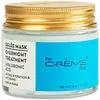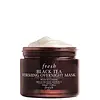What's inside
What's inside
 Key Ingredients
Key Ingredients

 Benefits
Benefits

 Concerns
Concerns

 Ingredients Side-by-side
Ingredients Side-by-side

Water
Skin ConditioningDipropylene Glycol
HumectantPEG-240/Hdi Copolymer Bis-Decyltetradeceth-20 Ether
StabilisingCaprylic/Capric Triglyceride
MaskingGlycerin
HumectantPEG-100 Stearate
Macadamia Integrifolia Seed Oil
Skin ConditioningDimethicone
EmollientGlyceryl Stearate
EmollientGlycereth-26
HumectantCaprylyl Glycol
EmollientAllantoin
Skin ConditioningTocopheryl Acetate
AntioxidantCaprylhydroxamic Acid
Adenosine
Skin ConditioningPortulaca Oleracea Extract
Skin ConditioningParfum
MaskingDisodium EDTA
Butylene Glycol
HumectantPhenoxyethanol
PreservativeSodium Hyaluronate
HumectantPolyglutamic Acid
Skin ConditioningCI 42090
Cosmetic ColorantWater, Dipropylene Glycol, PEG-240/Hdi Copolymer Bis-Decyltetradeceth-20 Ether, Caprylic/Capric Triglyceride, Glycerin, PEG-100 Stearate, Macadamia Integrifolia Seed Oil, Dimethicone, Glyceryl Stearate, Glycereth-26, Caprylyl Glycol, Allantoin, Tocopheryl Acetate, Caprylhydroxamic Acid, Adenosine, Portulaca Oleracea Extract, Parfum, Disodium EDTA, Butylene Glycol, Phenoxyethanol, Sodium Hyaluronate, Polyglutamic Acid, CI 42090
Water
Skin ConditioningGlycerin
HumectantButylene Glycol
HumectantJojoba Esters
EmollientIsohexadecane
EmollientAmmonium Acryloyldimethyltaurate/Vp Copolymer
Dicaprylyl Carbonate
EmollientCamellia Oleifera Seed Oil
Skin ConditioningPentylene Glycol
Skin ConditioningEthylhexyl Palmitate
EmollientMirabilis Jalapa Extract
Skin ConditioningGlyceryl Stearate
EmollientSteareth-21
CleansingCaprylic/Capric Triglyceride
MaskingDimethicone
EmollientOxidized Corn Oil
Skin ConditioningButyrospermum Parkii Butter
Skin ConditioningCera Alba
EmollientKigelia Africana Fruit Extract
Skin ConditioningSaccharomyces Ferment Filtrate
HumectantCamellia Sinensis Leaf Extract
AntimicrobialRubus Fruticosus Leaf Extract
MaskingLitchi Chinensis Seed Extract
Skin ConditioningRosa Damascena Flower Oil
MaskingSodium Hyaluronate
HumectantAdenosine
Skin ConditioningTocopheryl Acetate
AntioxidantTocopherol
AntioxidantCeteareth-20
CleansingBehenyl Alcohol
EmollientParfum
MaskingCeteareth-12
EmulsifyingCetearyl Alcohol
EmollientSodium Citrate
BufferingSodium Polyacrylate Starch
AbsorbentSodium Polyacrylate
AbsorbentSorbitan Laurate
EmulsifyingDisodium EDTA
Maltodextrin
AbsorbentSilica
AbrasiveTetrasodium EDTA
Hydroxyethylcellulose
Emulsion StabilisingAcetyl Dipeptide-1 Cetyl Ester
Skin ConditioningCitric Acid
BufferingCI 77891
Cosmetic ColorantBHT
AntioxidantPotassium Sorbate
PreservativeBiotin
AntiseborrhoeicPhenoxyethanol
PreservativeLinalool
PerfumingCitronellol
PerfumingGeraniol
PerfumingWater, Glycerin, Butylene Glycol, Jojoba Esters, Isohexadecane, Ammonium Acryloyldimethyltaurate/Vp Copolymer, Dicaprylyl Carbonate, Camellia Oleifera Seed Oil, Pentylene Glycol, Ethylhexyl Palmitate, Mirabilis Jalapa Extract, Glyceryl Stearate, Steareth-21, Caprylic/Capric Triglyceride, Dimethicone, Oxidized Corn Oil, Butyrospermum Parkii Butter, Cera Alba, Kigelia Africana Fruit Extract, Saccharomyces Ferment Filtrate, Camellia Sinensis Leaf Extract, Rubus Fruticosus Leaf Extract, Litchi Chinensis Seed Extract, Rosa Damascena Flower Oil, Sodium Hyaluronate, Adenosine, Tocopheryl Acetate, Tocopherol, Ceteareth-20, Behenyl Alcohol, Parfum, Ceteareth-12, Cetearyl Alcohol, Sodium Citrate, Sodium Polyacrylate Starch, Sodium Polyacrylate, Sorbitan Laurate, Disodium EDTA, Maltodextrin, Silica, Tetrasodium EDTA, Hydroxyethylcellulose, Acetyl Dipeptide-1 Cetyl Ester, Citric Acid, CI 77891, BHT, Potassium Sorbate, Biotin, Phenoxyethanol, Linalool, Citronellol, Geraniol
Ingredients Explained
These ingredients are found in both products.
Ingredients higher up in an ingredient list are typically present in a larger amount.
Adenosine is in every living organism. It is one of four components in nucleic acids that helps store our DNA.
Adenosine has many benefits when used. These benefits include hydrating the skin, smoothing skin, and reducing wrinkles. Once applied, adenosine increases collagen production. It also helps with improving firmness and tissue repair.
Studies have found adenosine may also help with wound healing.
In skincare products, Adenosine is usually derived from yeast.
Learn more about AdenosineButylene Glycol (or BG) is used within cosmetic products for a few different reasons:
Overall, Butylene Glycol is a safe and well-rounded ingredient that works well with other ingredients.
Though this ingredient works well with most skin types, some people with sensitive skin may experience a reaction such as allergic rashes, closed comedones, or itchiness.
Learn more about Butylene GlycolThis ingredient is an emollient, solvent, and texture enhancer. It is considered a skin-softener by helping the skin prevent moisture loss.
It helps thicken a product's formula and makes it easier to spread by dissolving clumping compounds.
Caprylic Triglyceride is made by combining glycerin with coconut oil, forming a clear liquid.
While there is an assumption Caprylic Triglyceride can clog pores due to it being derived from coconut oil, there is no research supporting this.
Learn more about Caprylic/Capric TriglycerideDimethicone is a type of synthetic silicone created from natural materials such as quartz.
What it does:
Dimethicone comes in different viscosities:
Depending on the viscosity, dimethicone has different properties.
Ingredients lists don't always show which type is used, so we recommend reaching out to the brand if you have questions about the viscosity.
This ingredient is unlikely to cause irritation because it does not get absorbed into skin. However, people with silicone allergies should be careful about using this ingredient.
Note: Dimethicone may contribute to pilling. This is because it is not oil or water soluble, so pilling may occur when layered with products. When mixed with heavy oils in a formula, the outcome is also quite greasy.
Learn more about DimethiconeDisodium EDTA plays a role in making products more stable by aiding other preservatives.
It is a chelating agent, meaning it neutralizes metal ions that may be found in a product.
Disodium EDTA is a salt of edetic acid and is found to be safe in cosmetic ingredients.
Learn more about Disodium EDTAGlycerin is already naturally found in your skin. It helps moisturize and protect your skin.
A study from 2016 found glycerin to be more effective as a humectant than AHAs and hyaluronic acid.
As a humectant, it helps the skin stay hydrated by pulling moisture to your skin. The low molecular weight of glycerin allows it to pull moisture into the deeper layers of your skin.
Hydrated skin improves your skin barrier; Your skin barrier helps protect against irritants and bacteria.
Glycerin has also been found to have antimicrobial and antiviral properties. Due to these properties, glycerin is often used in wound and burn treatments.
In cosmetics, glycerin is usually derived from plants such as soybean or palm. However, it can also be sourced from animals, such as tallow or animal fat.
This ingredient is organic, colorless, odorless, and non-toxic.
Glycerin is the name for this ingredient in American English. British English uses Glycerol/Glycerine.
Learn more about GlycerinGlyceryl Stearate is a mix of glycerin and stearic acid.
It is used to stabilize the mixing of water and oil ingredients. By preventing these ingredients from separating, it can help elongate shelf life. It can also help thicken the product's texture.
As an emollient, it helps soften skin and supports barrier-replenishing ingredients.
In cosmetics, Glyceryl Stearate is often made from vegetable oils or synthetically produced.
This ingredient may not be fungal-acne safe
Fun fact: The human body also creates Glyceryl Stearate naturally.
Learn more about Glyceryl StearateParfum is a catch-all term for an ingredient or more that is used to give a scent to products.
Also called "fragrance", this ingredient can be a blend of hundreds of chemicals or plant oils. This means every product with "fragrance" or "parfum" in the ingredients list is a different mixture.
For instance, Habanolide is a proprietary trade name for a specific aroma chemical. When used as a fragrance ingredient in cosmetics, most aroma chemicals fall under the broad labeling category of “FRAGRANCE” or “PARFUM” according to EU and US regulations.
The term 'parfum' or 'fragrance' is not regulated in many countries. In many cases, it is up to the brand to define this term.
For instance, many brands choose to label themselves as "fragrance-free" because they are not using synthetic fragrances. However, their products may still contain ingredients such as essential oils that are considered a fragrance by INCI standards.
One example is Calendula flower extract. Calendula is an essential oil that still imparts a scent or 'fragrance'.
Depending on the blend, the ingredients in the mixture can cause allergies and sensitivities on the skin. Some ingredients that are known EU allergens include linalool and citronellol.
Parfum can also be used to mask or cover an unpleasant scent.
The bottom line is: not all fragrances/parfum/ingredients are created equally. If you are worried about fragrances, we recommend taking a closer look at an ingredient. And of course, we always recommend speaking with a professional.
Learn more about ParfumPhenoxyethanol is a preservative that has germicide, antimicrobial, and aromatic properties. Studies show that phenoxyethanol can prevent microbial growth. By itself, it has a scent that is similar to that of a rose.
It's often used in formulations along with Caprylyl Glycol to preserve the shelf life of products.
Sodium Hyaluronate is hyaluronic acid's salt form. It is commonly derived from the sodium salt of hyaluronic acid.
Like hyaluronic acid, it is great at holding water and acts as a humectant. This makes it a great skin hydrating ingredient.
Sodium Hyaluronate is naturally occurring in our bodies and is mostly found in eye fluid and joints.
These are some other common types of Hyaluronic Acid:
Learn more about Sodium HyaluronateTocopheryl Acetate is AKA Vitamin E. It is an antioxidant and protects your skin from free radicals. Free radicals damage the skin by breaking down collagen.
One study found using Tocopheryl Acetate with Vitamin C decreased the number of sunburned cells.
Tocopheryl Acetate is commonly found in both skincare and dietary supplements.
Learn more about Tocopheryl AcetateWater. It's the most common cosmetic ingredient of all. You'll usually see it at the top of ingredient lists, meaning that it makes up the largest part of the product.
So why is it so popular? Water most often acts as a solvent - this means that it helps dissolve other ingredients into the formulation.
You'll also recognize water as that liquid we all need to stay alive. If you see this, drink a glass of water. Stay hydrated!
Learn more about Water